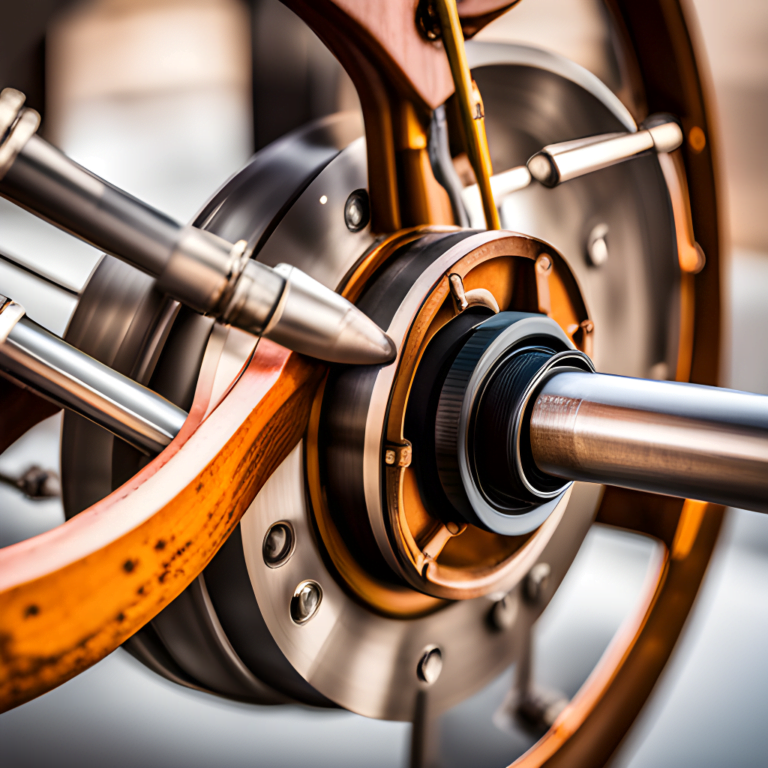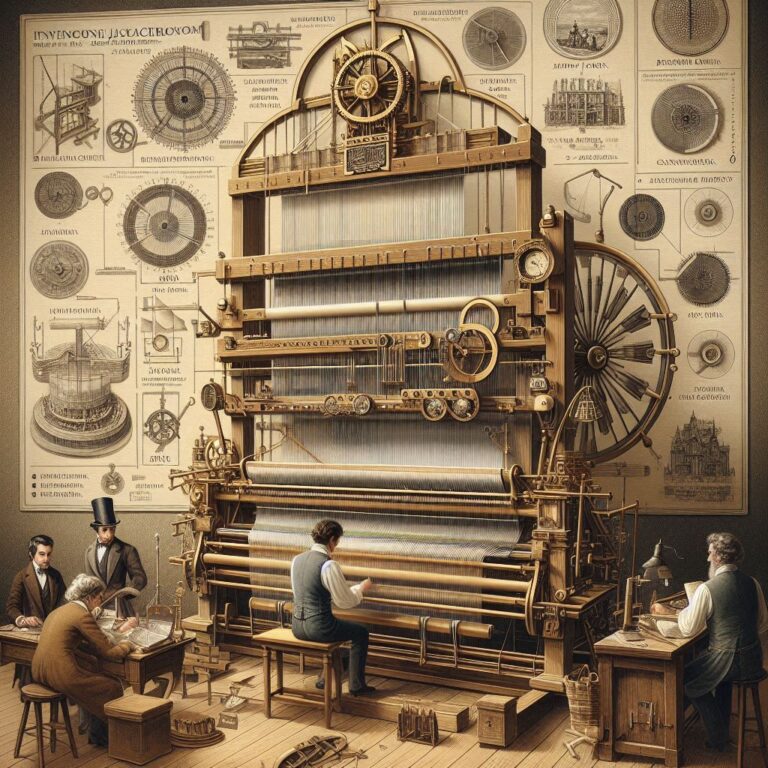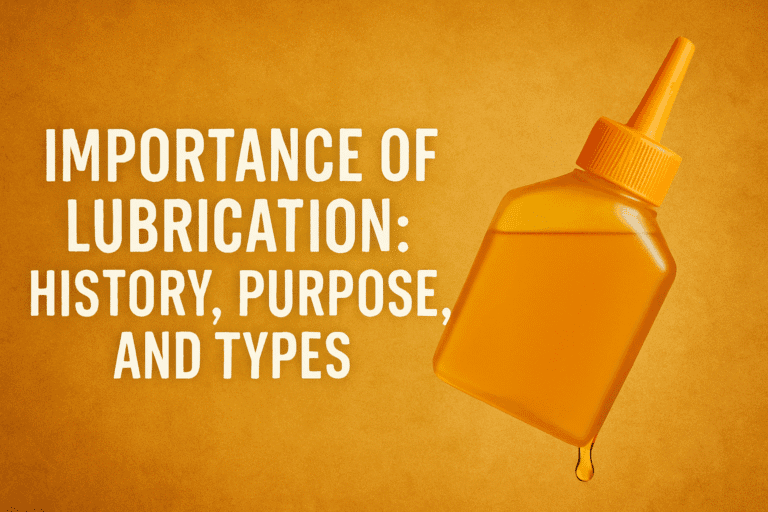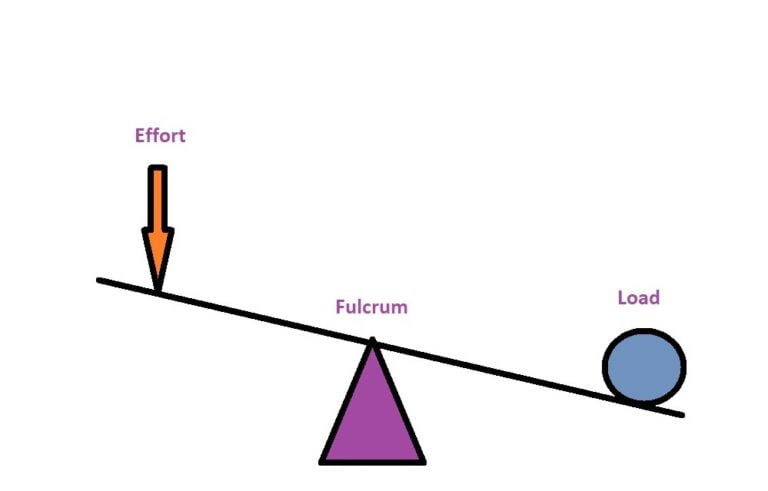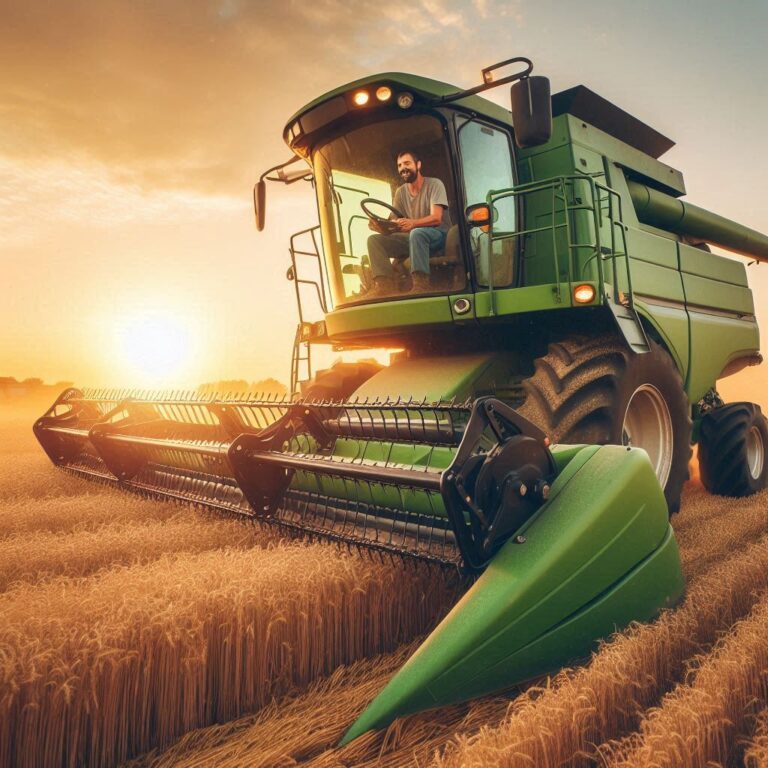Introduction – Planting the Seeds of Change
Before the invention of the seed drill machine, farming was a labor-intensive process marked by inefficiency and waste. Farmers scattered seeds by hand, hoping enough would germinate to produce a good harvest. This guesswork method often resulted in uneven fields, with some patches overcrowded and others left bare.
The turning point came in the early 18th century when Jethro Tull, an English agricultural pioneer, introduced the seed drill machine. His invention mechanized the sowing process by placing seeds neatly in rows at the right depth and spacing. This not only reduced waste but also increased crop yields dramatically, making it one of the most important innovations of the Agricultural Revolution.
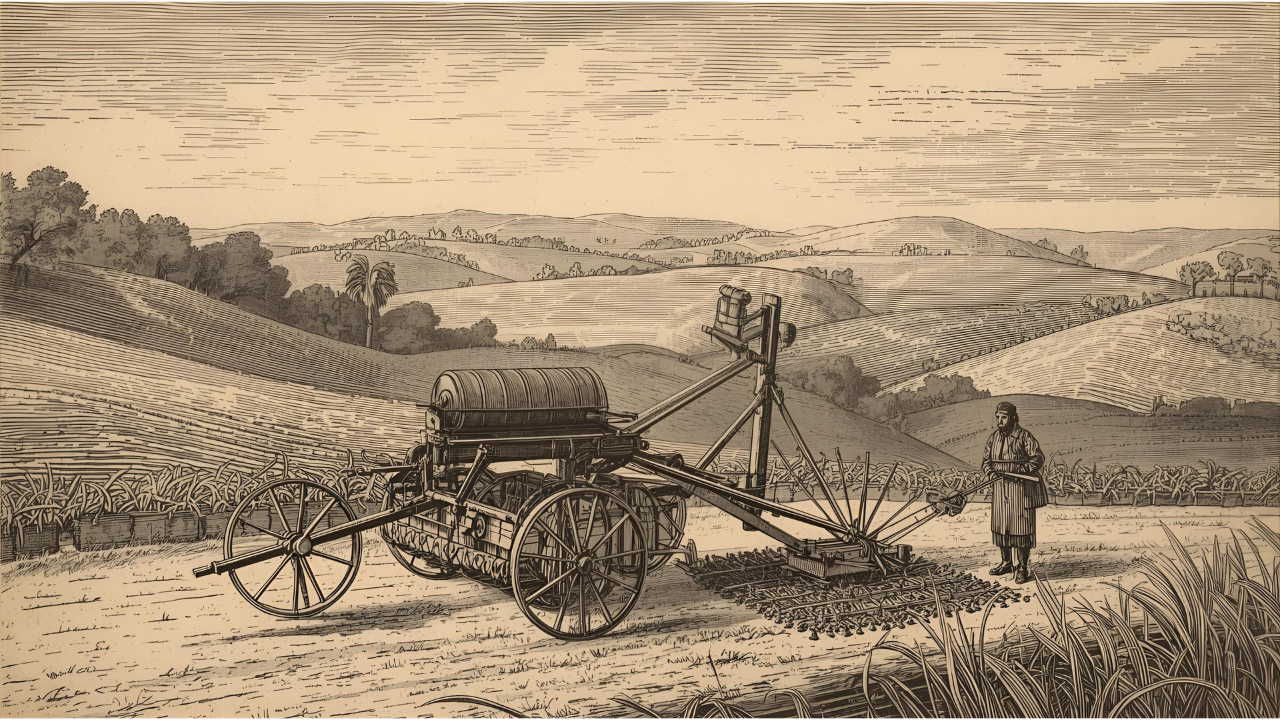
The seed drill inventor transformed farming into a more scientific and productive system. By improving efficiency and ensuring healthier plant growth, his invention laid the foundation for modern agriculture, where precision and productivity drive food production.
Farming Before the Seed Drill
To fully appreciate the revolutionary impact of the seed drill history, it is essential to understand the farming methods that preceded it. For centuries, European farmers relied on broadcasting—the practice of scattering seeds by hand over plowed soil. While simple, this method had significant drawbacks:
- Uneven distribution – Seeds often clumped together or spread too thinly, leading to patchy growth and reduced crop yields.
- Shallow planting – Many seeds remained on the soil surface, making them vulnerable to birds, wind, and trampling by livestock.
- High seed wastage – To compensate for poor placement, farmers used far more seed than necessary, yet overall yields remained low.
- Labor-intensive and inefficient – Broadcasting was physically demanding, slow, and left much of the harvest to chance.
By the late 17th century, population growth in Europe put increasing pressure on agriculture. Food shortages were a constant concern, and there was a growing need for farming methods that could reliably feed larger societies. Agriculturalists and progressive landowners began exploring more precise sowing techniques, often inspired by methods used in continental Europe, such as careful row planting in vineyards.
In this context, Jethro Tull developed the seed drill machine, a mechanized solution that combined efficiency, precision, and innovation. This invention was not merely a tool—it was a response to economic, social, and technological pressures, marking the beginning of a systematic transformation in agriculture. By enabling uniform planting, the seed drill history demonstrates how technology could increase productivity and lay the foundation for industrialized farming.
The Inventor – Jethro Tull and His Vision
The seed drill inventor, Jethro Tull (1674–1741), was an English agricultural pioneer whose ideas reshaped farming during the Agricultural Revolution. Born in Berkshire to a prosperous family, Tull initially studied law but soon dedicated himself to farming, applying scientific observation and mechanical principles to improve agricultural productivity.
During his travels in Europe, Tull observed innovative practices, particularly in France and Italy, where systematic planting and meticulous soil preparation were already improving crop yields. Inspired by these methods, he returned to England with a vision: to mechanize sowing and improve the efficiency of farming.

Tull conducted numerous experiments at his farm, testing different soil cultivation techniques, seed spacing, and planting depths. His goal was to reduce seed wastage, improve germination rates, and promote healthier plant growth. Beyond the famous Jethro Tull seed drill, he also experimented with horse-drawn cultivation equipment and mechanical plows, emphasizing the integration of technology into everyday farming.
Although initially met with skepticism from traditional farmers, Tull’s ideas gradually gained recognition. His pioneering work laid the groundwork for modern agricultural engineering. Today, he is remembered not just as the seed drill inventor, but as a visionary who demonstrated that scientific principles could solve long-standing agricultural challenges.
The First Seed Drill Machine (1701)
In 1701, Jethro Tull unveiled his first seed drill machine, a wooden device that represented a turning point in the seed drill history. While simple compared to modern equipment, Tull’s drill introduced several innovative features:
- Seed box – A container to hold seeds before planting.
- Funnel and chute system – Guided seeds into the soil at precise intervals.
- Rotating cylinder – Controlled spacing, ensuring uniform rows.
This mechanized approach allowed seeds to be planted in straight rows at consistent depths, solving the inefficiencies of hand broadcasting. The results were immediately noticeable:
- Better germination rates – Seeds placed at optimal depth grew more reliably.
- Stronger crop growth – Even spacing reduced competition for water, nutrients, and sunlight.
- Reduced seed wastage – Less seed was needed to cover the same area, cutting costs and labor.
- Improved field management – Straight rows simplified weeding, irrigation, and harvesting.
Tull’s invention demonstrated that mechanical solutions could dramatically increase efficiency and productivity. Even though the first machine was made entirely of wood and required manual or horse-powered operation, it established the concept that precision planting could revolutionize farming. According to the seed drill history, fields sown with Tull’s drill consistently produced higher yields, proving the value of combining engineering principles with agriculture.
How the Seed Drill Works – Step by Step
The seed drill machine revolutionized agriculture by turning seed planting into a precise, repeatable process that dramatically improved crop yields. Unlike hand broadcasting, which was imprecise and wasteful, the seed drill ensured consistent depth, spacing, and protection for every seed. Here’s how it works, step by step:
- Hopper – At the top of the machine, seeds are stored in a large container or hopper. Early drills used wooden hoppers, while modern versions use metal or plastic containers for durability and controlled flow.
- Seed Tube – Seeds travel from the hopper through tubes, either by gravity or mechanical metering mechanisms. This ensures that each seed is delivered individually rather than in clumps.
- Ploughshare or Furrow Opener – This component cuts small, uniform trenches into the soil. Depth control is critical: too shallow and seeds risk drying out, too deep and germination is hindered. Adjustable furrow openers allow the drill to work effectively across different soil types.
- Seed Placement – Seeds are deposited into the furrows at regular intervals, ensuring even spacing. Some advanced drills use rotating seed plates or pneumatic systems to precisely control seed distribution.
- Covering Device – After placement, a harrow, roller, or small blade covers the seeds with soil. This step protects seeds from birds, wind, and surface drying, while maintaining optimal soil contact for germination.
Advantages Over Traditional Methods
The seed drill machine offered several critical improvements over broadcasting:
- Uniform depth – Promoted even germination and stronger root development.
- Precise spacing – Reduced competition for nutrients and sunlight between plants.
- Seed protection – Covered seeds ensured less waste from birds, pests, and erosion.
- Labor efficiency – Mechanization allowed farmers to plant larger areas in less time.
- Simplified field management – Neat rows made weeding, irrigation, and harvesting much easier.
By introducing a systematic and reliable method of planting, the seed drill machine transformed agriculture into a more scientific discipline, increasing productivity and helping meet the food demands of growing populations.
Improvements and Variants Over Time
Jethro Tull’s original wooden seed drill was only the beginning. Over the next two centuries, innovations refined and expanded the concept, turning the seed drill into the backbone of modern mechanized agriculture.
18th Century Refinements
- Material improvements – Wooden frames were replaced with iron for durability, while sharper, stronger ploughshares could penetrate tougher soils.
- Horse-drawn models – Mechanization allowed a single farmer to sow much larger fields with less effort.
- Multiple rows – Early experiments with two- or three-row drills increased planting efficiency.
19th Century Innovations
- Larger multi-row drills – Machines capable of planting several rows simultaneously became common, allowing for mass production of staple crops such as wheat, barley, and oats.
- Enhanced seed distribution – Mechanical metering systems improved spacing and reduced seed waste further.
- Adoption in global agriculture – These drills spread beyond Britain to continental Europe and the Americas, accelerating agricultural productivity worldwide.
20th Century to Modern Day
- Tractor-powered drills – With the invention of tractors, drills could cover vast fields quickly, reducing labor and time costs.
- Precision seeders – Today, GPS-guided and sensor-equipped drills place seeds with pinpoint accuracy, adjusting depth and spacing automatically to suit soil conditions.
- Sustainable farming integration – Modern seed drills support no-till and conservation agriculture practices, helping to preserve soil health while maximizing yields.
From Jethro Tull’s first wooden machine to today’s smart agricultural drills, the seed drill history illustrates the evolution of farming technology. While the principles of depth, spacing, and protection remain unchanged, modern innovations have exponentially increased efficiency, helping farmers feed a growing global population with less waste, less labor, and more predictable results.
Role in the Agricultural Revolution
The agricultural revolution seed drill became one of the defining innovations of the 18th century. Before its invention, farming relied heavily on outdated and wasteful methods, which kept yields low and populations vulnerable to famine. Jethro Tull’s machine symbolized a new era where science and technology began to transform agriculture into a systematic, efficient industry.
The impact of the seed drill on the Agricultural Revolution was profound:
- Higher Yields – Uniform planting meant more seeds germinated successfully, boosting harvests. Farmers can grow more crops on the same amount of land.
- Population Growth – Increased food supply helped reduce hunger and supported a growing European population during the 18th and 19th centuries.
- Urbanization – With farms producing more efficiently, fewer laborers were needed in rural areas. Many moved to cities, fueling the workforce for the Industrial Revolution.
- Economic Transformation – By reducing waste and maximizing output, the seed drill gave farmers a competitive edge and accelerated Europe’s transition toward modern farming practices.
For these reasons, the agricultural revolution seed drill is often seen as a cornerstone invention that linked agricultural progress with industrial and social change.
Global Spread and Adoption
The seed drill history doesn’t end with Jethro Tull’s invention in Britain—it quickly became a global agricultural innovation.
- Britain and Europe – After initial skepticism, progressive farmers adopted the machine. By the late 18th century, it had become a common sight on larger estates across England. From there, the innovation spread to continental Europe, especially in countries like France and Germany, where farming reforms were gaining momentum.
- Resistance from Traditional Farmers – At first, many small farmers resisted the seed drill, preferring the cheaper and familiar method of hand-sowing. However, as yields from drilled fields consistently outperformed traditional methods, the resistance faded.
- Colonial Agriculture – The seed drill spread to colonies in North America, Australia, and India, where it reshaped farming landscapes. Its adoption in large-scale wheat farming in the U.S. and Canada played a huge role in turning those regions into global breadbaskets.
- Worldwide Impact – By the 19th century, the seed drill history had become a global story of agricultural modernization, laying the foundation for today’s mechanized farming.
Thus, the seed drill wasn’t just a European invention—it became a worldwide force that shaped the way food was grown, distributed, and consumed.
Legacy and Modern Relevance
Even though more than 300 years have passed since its invention, the seed drill machine remains one of the foundational tools of modern agriculture. Every mechanized seeder used today—from small-scale farm equipment to massive tractor-powered drills—traces its design principles back to Jethro Tull’s innovation.
Modern farmers still rely on the same concepts:
- Controlled Seed Placement – Just like the Jethro Tull seed drill, today’s machines ensure seeds are planted at the right depth and spacing.
- Protection for Germination – Covering devices shield seeds from pests and the environment, a method unchanged since the early 18th century.
- Efficiency and Sustainability – Modern drills use advanced technology such as GPS, AI, and variable-rate seeding to reduce waste and maximize yield—extensions of Tull’s original goal of improving efficiency.
The seed drill machine is also central to sustainable farming. By reducing seed waste and improving soil use, it supports environmentally friendly practices that are crucial for feeding a growing global population. In many ways, the machine’s legacy is not just historical—it continues to shape agriculture’s future.
Conclusion – The Simple Machine That Fed the World
The seed drill inventor, Jethro Tull, could hardly have imagined the global impact of his 1701 invention. Yet his vision reshaped agriculture forever, making food production more reliable and efficient. What began as a wooden device pulled by horses became the backbone of the seed drill history, powering the Agricultural Revolution and laying the groundwork for the Industrial Revolution.
By introducing precision to farming, the seed drill increased yields, reduced waste, and transformed the way humans interacted with the land. It is no exaggeration to say that this simple machine helped feed the world and supported the growth of modern civilization.
Even today, Tull’s principles live on in every mechanized seeder and precision farming tool. His invention is a reminder that sometimes the simplest ideas—organized rows of seeds—can change the course of history.
🌱 Curious to explore more milestones in farming innovation? Check out these related articles:

